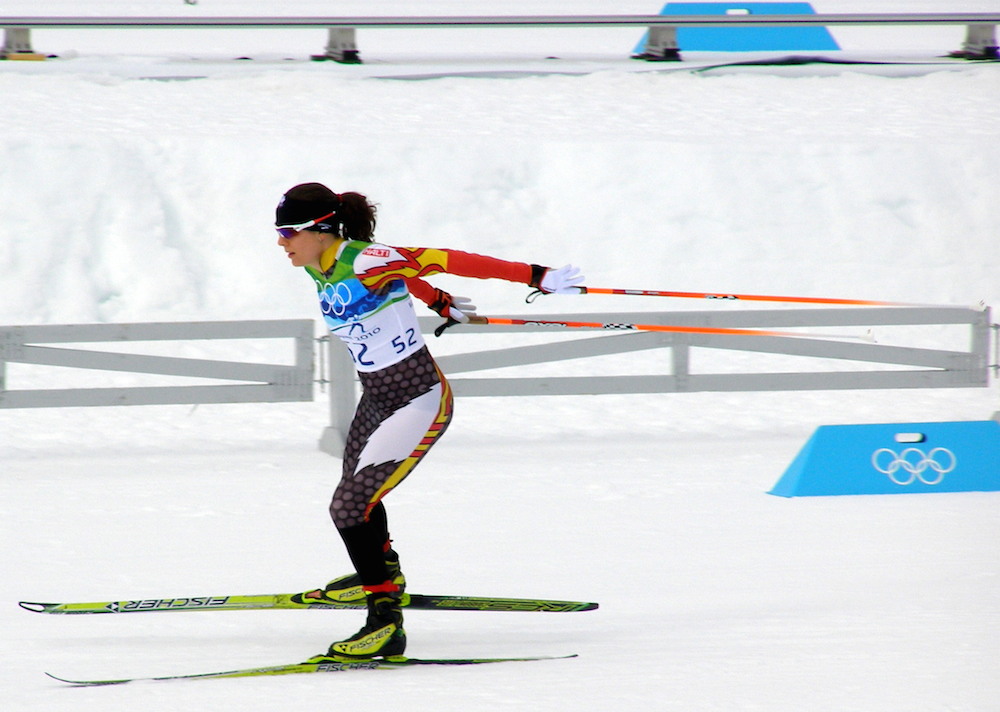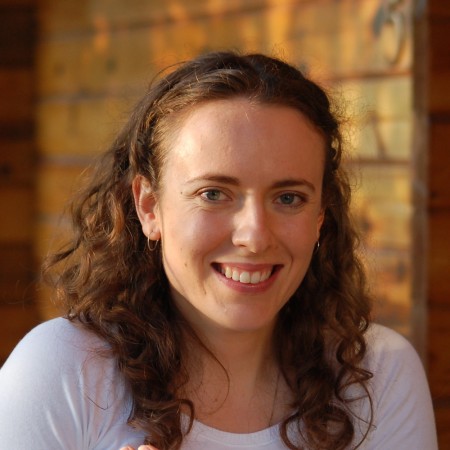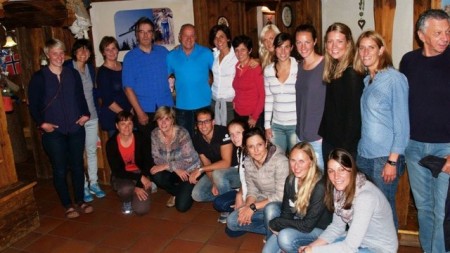
Madeleine Williams was like your typical kid growing up in Edmonton, Alberta, except she had a special knack for skiing and she kept at it, thanks to two influential coaches: Michael Kennedy and Jack Cook.
In an email, the newly proclaimed chair of Cross Country Canada’s (CCC) Women’s Committee explained that she was lucky as a child and developing athlete to not experience much gender inequality until she was older.
“My family encouraged my athleticism [and] I had two really great coaches at the club level, both male, who inspired me to develop a strong, independent approach to sport,” Williams, now 31, reflected. “I recognized from a young age that my situation wasn’t necessarily the norm, though.”
By her early 20s, Williams and her teammates on the Canadian National Team started noticing a retention problem among female teenage skiers. Many of us have heard how Chandra Crawford kickstarted Fast and Female, an initiative that began in 2005 and continues to snowball in terms of participation and impact today, but it was the work of Crawford, Sara Renner, Dasha Gaiazova, and Williams with the Women’s Committee that helped get it off the ground.
In fall of 2005, nearly 50 girls ages 8 to 18 came out for the first Fast and Female event at Sovereign Lake, British Columbia.
“Where are all the girls?” Crawford asked at the time. “When we all start out in the Jackrabbit programs, the number of boys and girls competing is almost the same. As we go up the competitive ladder, a lot of the girls seem to drop out.”
Williams was 22 at the time. She spent a decade on the national team and 15 years racing, while earning a bachelor with distinction in psychology from Athabasca University in 2009. A year later, she competed at the 2010 Vancouver Olympics, after which she decided to pursue a law degree at McGill University. There, she published an article in the International Sports Law Journal on policy recommendations to improve gender equity in elite Canadian sports, and graduated this spring.

Now with bachelor degrees in both common law and civil law, she works as a full-time articling student at the Federal Ministry of Justice in Edmonton. Despite her crammed schedule, she’s found time to stay involved with skiing and helped advise CCC’s High Performance Committee last year on how to restructure carding criteria to make it more gender-equal.
Based on those recommendations, CCC voted to modify the carding-selection process before last season.
Late last month, after the Women’s Committee’s long search to find a replacement for co-chairs Beckie Scott and Milaine Theriault, they chose Williams for the next two-year term.
“Madeleine is relentless in her commitment to excellence – both as an athlete and in her law career,” CEO Davin MacIntosh said in a CCC press release. “I know the future of women in our sport is in good hands with Madeleine chairing this highly accomplished group of women who are passionate and dedicated to the success of cross-country skiing.”
Not previously a committee member, Williams explained CCC approached her to take the unpaid leadership role Scott and Theriault filled for the last two years because of the work she had recently done in the area.
According to CCC, Scott and Theriault will continue to serve on the committee, which also includes Sudrich (Yukon), Camille Pepin (Quebec), Kathy Davies (Alberta), Marie-Helene Thibault (Alberta), Sue Holloway (Ontario), Sharleen Hoar (British Columbia), and staff member Stephane Barrette.
Below is more from our question-and-answer with Williams, who lives with her husband, Graham Nishikawa, a Para-Nordic World Cup Team guide and 2014 Paralympic gold medalist, in Edmonton.
FasterSkier: It sounds like your life is already quite busy. How much time do you think this position as Women’s Committee chair will require, and how often does the committee meet?
Madeleine Williams: Yes – my work is full time-plus at this point. So far the time commitment has been about 10-15 hours a week. We only meet about 4 times a year but there is lots of work to do in between those meetings! I am happy to do this work because I really believe we have an opportunity to make a difference.
FS: How do you go about fostering quality coaching? Where does the process start, and what qualities should any coach have — male or female — that will contribute to athlete retention?
MW: This is an issue we are actively targeting. I don’t have all the answers yet. We were able to send a delegate over to the FIS women in coaching seminar last month [committee member Pavlina Sudrich]. She brought back some great insights that we hope to put to work to help educate coaches about working with female athletes. We also recently completed a survey of female coaches in Canada — we are drawing from those responses to gain a better understanding of what we can do to recruit and retain female coaches.

[Note: The Women’s Committee gave Sudrich a $2,000 coaching-development grant to attend the three-day inaugural FIS Cross Country Sub-Committee for women in September in Val di Fiemme, Italy. Eighteen delegates from 10 countries participated and FIS Cross Country Chairman Vegard Ulvang hailed it as, “the first step on the way to involve more ladies in our sport,” he said in a FIS press release. “We need ladies as coaches, leaders, technical delegates and athletes.”]
FS: Did Sudrich bring back any surprising information?
MW: I was most surprised that less than 1% of team staff on the World Cup is female. There were also a couple of take-home messages relevant to issues we are trying to address. First, to retain female athletes, You need to create a system where women do not have to be first in order to feel valued. Second, to effectively motivate and retain women, they must be in an overall healthy environment, free from intra-team conflict and other related emotional stressors.
FS: Can you elaborate on CCC’s online survey [which ended Sept. 26]? What’s the overarching theme of the results?
MW: We had a great response rate and are working through the results. I would say the biggest theme, across both female athletes and coaches, is a concern about balancing skiing with other life commitments. Young female athletes particularly point to difficulties being able to ski and go to school.
FS: What ages have been identified as key to athlete retention? Besides coaching and previous gender inequality when it comes to things like carding, what else has discouraged young women from sticking with skiing in Canada?
MW: What we are seeing over and over is 15-18 year olds leaving competition. The difficulty of balancing skiing with school is a huge issue that we are actively addressing. This will be a big priority for the coming year — we have a few initiatives in the planning stages to hopefully address this.
There is also an issue around the perception of inequitable distribution of development and elite opportunities. We don’t have any women on our Senior World Cup Team. We are looking at initiatives to bring the women’s team back to the strength and depth it had in the past.
FS: Can you elaborate on what you told the Rocky Mountain Outlook: “There is a problem with proportionality. The number of women being funded compared to the number trying for positions doesn’t line up.”
MW: Again, we don’t have any women on our senior World Cup team now. The number of women on development teams and training centres is also not what it should be given the number of women competing at the national level. We are actively investigating the reasons for this. It is a complex issue with many variables that need to be recognized and addressed at different levels in the sport system.
FS: What kind of outreach programs has the Women’s Committee held in the past?
MW: In the past few years we have held seminars and workshop-type events at a few points throughout the year. Using the survey outcomes, we are looking now at how best to use our resources for the coming year. Because our mandate is quite broad, we need to be sure that we are providing value to a number of different types of constituents — from recreational through elite, both athletes and coaches.
FS: How often do you have to drive back and forth to Canmore [about 400 kilometers, or 3 hours and 45 minutes, from Edmonton]?
MW: The Committee typically meets via conference call. We are spread out across the country so meeting in person just isn’t feasible! I will be travelling to Canmore a few times a year to attend other meetings at CCC, however.
Alex Kochon
Alex Kochon (alexkochon@gmail.com) is a former FasterSkier editor and roving reporter who never really lost touch with the nordic scene. A freelance writer, editor, and outdoor-loving mom of two, she lives in northeastern New York and enjoys adventuring in the Adirondacks. She shares her passion for sports and recreation as the co-founder of "Ride On! Mountain Bike Trail Guide" and a sales and content contributor at Curated.com. When she's not skiing or chasing her kids around, Alex assists authors as a production and marketing coordinator for iPub Global Connection.



